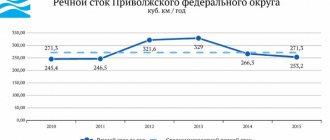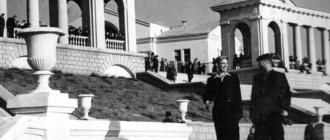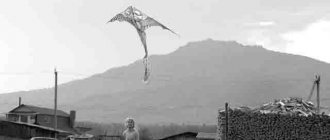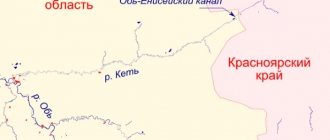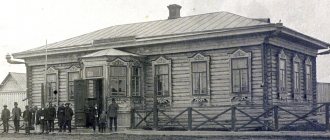The city of Pokhvistnevo (Samara region) is the regional and administrative center of the urban district of the same name. Location coordinates: 53°39′00″ N. latitude, 52°08′00″ e. d. From the main city of the region - Samara - Pokhvistnevo is 160 kilometers away. Geographically located in the east, near the border with the Orenburg region. The city was intensively built on the left bank of the Bolshoi Kinel River. Pokhvistnevo index (Samara region) - 446450, vehicle code - 63, 163.
From the history
Pokhvistnevo received city status in 1947. The need to form a settlement here arose in the century before last, when construction of the railway between Samara and Ufa began. A railway station opened in 1888, and a post office began operating a little later. In 1905, the railway station building was erected.
In the middle of the last century, exploration of oil deposits began on the territory of the present city of Pokhvistnevo (Samara Region). In connection with this activity, the village is rapidly developing. Thanks to this, the population grows and it is given city status. After 16 years it becomes a city of regional subordination.
Pokhvistnevo today
| The city of Pokhvistnevo is located in a picturesque location on the left bank of the Bolshoi Kinel River, which is the right tributary of the Samarka River. The total land area of the city is more than 6.5 thousand hectares. The unconditional value of the city is its favorable natural and climatic conditions and good ecology. The city has an advantageous transport position. From the south there is the Trans-Siberian Railway and the Samara-Buguruslan highway with access to the M-5 federal highway. In the east, Pokhvistnevo borders on the Orenburg region, in the south, west and north the lands of the Pokhvistnevo district are adjacent. |
We can proudly state that the city is still young (the population remained at the 1985 level of around 30 thousand people, and the proportion of people under working age, 15.5%, is higher than in the Samara region). The population of the urban district has a steady growth trend, both due to the demographic component and due to migration growth. The average age of a resident of the urban district is 39.8 years. We have extremely high labor potential and a developed market for highly qualified labor.
| Pokhvistnevo has always been considered a multinational city. It developed, attracting people from other territories. First of all, from nearby rural settlements, as well as from the territories of other countries. If we remember the time of development of the oil and gas industry in the settlement, then it must be said that then oil and gas workers from Azerbaijan and Grozny came to the city. In the early 1940s, quite a lot of repressed Soviet Germans lived in this city. Today, Russians, Chuvash, Tatars, Mordovians and representatives of other nationalities live in Pokhvistnevo. Pokhvistnevo is, first and foremost, people. We must remember those who built and raised the city and must support those through whose efforts the city lives. In Pokhvistnevo they remember, respect and appreciate a large galaxy of honorable fellow countrymen and citizens. Some residents who have the title “Honorary Citizen of the Pokhvistnevo Urban District of the Samara Region” are still working, many are on well-deserved retirement. The most important thing is that they exist, are interested in the prospects for the development of the city, and take an active part in the public life of Pokhvistnev. Being one of the smallest cities in the Samara province, which is located far from the regional center, Pokhvistnevo has always had a developed industrial complex. But years of economic depression and the difficult period of the late nineties led to the fact that many enterprises were unable to survive in the new market conditions. And betting on oil has become problematic. It was necessary to look for a way out of a difficult, seemingly hopeless situation. And he was found. |
In the period from 2002 to 2015, the city of Pokhvistnevo implemented its own development strategy. It included two stages. The first envisaged the formation of the city as a center of highly effective healthcare, quality education and culture in the northeast of the Samara region. Much has been achieved.
The education system provides residents of Pokhvistnevo with a wide range of services. There are 6 State budgetary educational institutions in the city, the structure of which includes institutions of general, preschool and additional education.
In recent years, Pokhvistnevo has become a student town. The Provincial College operates here, which offers multi-level and multidisciplinary education.
| A corporate territorial medical center has been created in the city in the northeastern region of the Samara region, where human resources, material and technical resources are concentrated to provide the population with high-quality medical services. An intermunicipal perinatal center opened in Pokhvistnevo. A new obstetric building with 40 beds appeared in Pokhvistnevo in 2010. In fact, even then the maternity ward began to function as an intermunicipal center. Women in labor came here from Isaklinsky, Klyavlinsky, Kamyshlinsky, Pokhvistnevsky districts and even from neighboring regions. |
This center is in no way inferior in equipment to the largest regional one. There is everything here to manage pregnancy, successfully deliver babies and, if necessary, care for babies.
State Budgetary Institution of the Samara Region "Social and recreational
offers a wide range of services to veterans and war veterans.
| State Budgetary Institution of the Samara Region “Pokhvistnevsky Youth Boarding House for the Disabled (Psychoneurological Boarding School)” today is one of the significant social institutions of a stationary type with a psychoneurological profile in the Samara Region. Accepts disabled people of groups 1-2 with mental illnesses, mental retardation of varying degrees, consequences of cerebral palsy, severe forms of epilepsy, genetic diseases (Down syndrome). |
Pokhvistnevo is a recognized cultural center of the northeast region
| Pokhvistnevskaya Children's Art School is one of the best art schools in the Samara region. About five hundred children regularly attend it. Based on the results of the regional public action “People’s Recognition”, in 2009 the Children’s Art School was recognized as a laureate in the “Unity and Success” nomination. In 1955, the Palace of Culture was opened in the city. On the basis of the Palace of Culture, in addition to a number of creative amateur groups, since 1993 the theatrical and creative association “Sad” has been operating, which includes three studios: the puppet studio “DiV”, the youth studio “Steps”, the adult studio “GARDEN”. |
The city of Pokhvistnevo has become the site of regular all-Russian festivals. The city hosts festivals of small and medium-sized Russian cities:
|
| Center for Children's Creativity "Pirouette" unites more than 700 children. His team worthily represents the city at regional, Russian and international competitions. The cadet movement has been successfully developing in the city since 2014. We have created all the conditions for the population of Pokhvistnevo to engage in physical culture and sports: the Sports Complex, 14 gyms, BC “Uppercut”, FC “Neftyanik”, Sports Hall are successfully functioning, courtyard sports grounds, and the stadium “Neftyanik” are actively operating. . |
The implementation of youth policy in the urban district of Pokhvistnevo is carried out by the municipal budgetary institution "House of Youth Organizations", created in mid-2006. By organizing traditional leisure activities and supporting youth initiatives to organize new ones in the city, the DMO contributes to the development of youth activity and supports its talented part. The “Svoi” search team has been successfully operating on the basis of the institution for more than 10 years.
| The city is fully provided with basic energy resources (gas, water, electricity), and also has a developed infrastructure of engineering support networks. The communal infrastructure is municipally owned, which allows for prompt resolution of all relevant issues. The city's public utility system is a reliable mechanism that ensures the uninterrupted supply of utilities. Public utility companies operate stably and break even. The city has major wireline and cellular operators. |
The municipality is successfully implementing a program for relocation from dilapidated housing, providing housing for public sector workers, young families, orphans, veterans and WWII participants. Active work is underway to attract young specialists in the fields of education, culture and healthcare.
In Pokhvistnevo, the pace of housing and road construction is again increasing, social facilities are being built and reconstructed, and small businesses are developing.
The second and decisive stage of the strategy
- the opening of new production facilities in the city is reflected in the Comprehensive Investment Plan for the modernization of the single-industry town of Pokhvistnevo for 2011-2020.
Currently, work is underway to develop a new Development Strategy.
| To implement investment projects, the city district has empty production areas provided with the necessary engineering infrastructure (water supply, wastewater disposal, gas supply, electricity supply of 15 MW and above). In addition, the city has reserve land plots in close proximity to passing utilities and the railway. |
Welcome to Pokhvistnevo!
Transport and industry
Pokhvistnevo (Samara region) is connected by regular train services with Samara and Ufa. Trains run constantly to Moscow and St. Petersburg. Road connections connect the city with the center of the region. Public transport - buses and minibuses.
Among the industrial enterprises, agricultural ones predominate; there are butter factories and feed mills. Pokhvistnevo is also a large railway junction with a developed warehouse infrastructure and a wheel workshop.
Infrastructure
In the city of Pokhvistnevo (Samara Region), three periodicals are published, the main federal television channels and radio stations are received, and in addition, signals from various radio and television companies in nearby settlements are received.
The city's infrastructure as a whole is characterized as developed. In Pokhvistnevo there are a large number of retail outlets, healthcare institutions, and educational institutions.
Sleeping area of the region
So what to do? “We will create a service center for the northeast of the region” - Filipenko already has an answer. It's simple. Pokhvistnevo is the only more or less large settlement in this area. Everywhere you look, there are only villages and villages for tens of kilometers. Take, for example, the Tatar village of Alkino with a population of 700 people. They live well; they grow cucumbers in giant greenhouses, which are sent for sale to Moscow. There are three mosques and even a madrasah. But where should a resident of Alkino go if he wants to stock up on non-perishable food products, buy a TV or a fur coat for his wife, and generally get some air? It’s 170 km to Samara, and 380 km to Orenburg. And to Pokhvistnevo - only 18 km.
First of all, Mayor Filipenko built a wholesale distribution center in Pokhvistnevo, an indoor fair with dry warehouses and convenient access roads. Residents of the city and surrounding villages, as well as owners of rural shops and cafes, school and factory canteens buy food here. Farm products are also packaged here for sale in Samara, Togliatti and other large cities in the region.
“Small cities are characterized by a “truncated” educational complex, the absence, with rare exceptions, of universities, which leads to an almost irreversible outflow of the most talented youth to larger cities,” stated the already mentioned program of the Open Society Institute. In 2001, Mayor Vladimir Filipenko bought the brick building of the local branch of SBS-Agro and entered into negotiations with Samara universities. Now the Pokhvistnevo Open Institute has branches of seven universities. Four hundred students are trained in 19 specialties - they train teachers and machine operators, municipal specialists and accountants, social workers and, of course, oil workers.
The successes of Pokhvistnevo did not go unnoticed - now the North-Eastern District Administration located in the city manages education in five nearby districts. Theoretically, this means a slight increase in the number of officials living in the city. In practice, the best teachers in the district will work in Pokhvistnevo.
Advertising on Forbes
Further more. One day, from the report of the chief physician of the district hospital, Mayor Vladimir Filipenko learned that half of the beds in the maternity hospital were occupied by illegal women in labor from the neighboring Kamyshlinsky district. Well, don’t drive women out into the cold! In May, by decision of the regional authorities, the hospital was transformed into an Interdistrict Medical Corporate Center for the North-Eastern region of the region. The area of responsibility is the same five districts of the region. The best equipment will be installed here, the best doctors will work here. And for the maternity hospital, a new obstetrics and gynecology building will finally be completed, which the mayor has been seeking for ten years.
And now we can report on the first successes. For example, for the first time in many years, the reduction in the number of city residents has been stopped “due to the influx of migrants from the rural population of nearby areas and an increase in the number of students...” reports the Pokhvistnevo administration website.
However, Vladimir Filipenko did not invent anything new. Even 100–150 years ago, county towns lived according to the same pattern: five to six thousand inhabitants, but a large fair, a white-stone cathedral, a fashionable hat shop “from Paris” and four theaters. Here on market day, dressed-up landowners came from sleepy surrounding estates: to celebrate mass in the church, buy their daughter sheet music of Liszt's rhapsody (number two, Hongroise), attend a fashionable performance with the participation of capital artists, and at the same time show off to society that same daughter, who was already quite ripe for marriage. .
Heraldry
The presence of the railway and oil is reflected in the heraldic symbols of the city. On the coat of arms you can see an oil derrick that converges on the horizon to a point, as usually happens if you look into the distance of the railway track. The golden bezant symbolizes the wealth of the region, and the main colors on the coat of arms – light green and azure (blue) – simultaneously emphasize belonging to the Samara region. The flag is also made in this color scheme.
Between 1988 and 1997 the city had a different coat of arms, the main colors of which were yellow and red. It also depicted an oil rig and a view of a gear, which symbolized the economic development of the city.
Ecology and climate
Due to the fact that there are no hazardous industries in the vicinity of the city of Pokhvistnevo (Samara region), the air is very clean. That is why there are many sanatoriums, recreation centers and other recreational facilities in the area.
The climate here is typical for this territory of the country - sharply continental, characterized by hot summers and frosty winters. The weather changes between these two seasons quickly, without the long autumn and spring.
What is the country made of?
Pokhvistnevo (a settlement with this name was first mentioned in 1888, now has 28,000 inhabitants) is a city without a face, a cliched child of Soviet urban planning policy. Several rows of five-story parallelepipeds, around them there are private sector houses, and beyond the outskirts there is steppe and hills. At crossroads, old women in Orenburg headscarves sell fried sunflower seeds. A rooster crows in the distance. In the Berezka cafe on Revolutionary Street, a gloomy waiter with a black eye will offer borscht, fried meat with mashed potatoes or “canapés with deli meats” (a sandwich with “doctor’s”). At the city's cultural center (pseudo-classicism, six columns and the coat of arms of the USSR on the pediment) there is the unchanged Lenin on a pedestal, nervously clutching his cap.
Is this a familiar picture? Familiar. More than 70% of the thousand Russian cities are such pokhvistnevo, similar points to each other with a population of up to 50,000 people. These landscapes and circumstances are home to almost 17 million people—the population of the whole of Australia, by the way. “It is small towns that form the “grassroots” network of the territorial structure of the Russian economy, carrying out the economic and sociocultural interconnection of rural areas with large cities,” said the text of the “Small Towns of Russia” program adopted in 1999 by the Open Society Institute (to date closed).
In other words, small towns fill the territory of the country like feathers fill a pillow, giving it shape. If there were no such settlements, Russia would be like Europe in the early Middle Ages, where between fortified cities lay hundreds of kilometers of uncontrolled space. There would be no country in the modern sense of the word.
“I’ll leave here. I'll finish school and leave. What should I do here? Teenager Valera D. impatiently taps her cue on the wiped edge of the table. We are talking in the Phantom billiard room. If a resident of Pokhvistnevo needs to take a guest somewhere, he is led to this smoky room with a couple of tables and gaming machines against the wall - it’s “civilized” here. Valera's friends, skinny guys in sweatpants, nod in agreement: we'll leave, they say.
The population of small towns is declining faster than the population of Russia as a whole. In Pokhvistnevo, the mortality rate is twice the birth rate. “Small towns are most often single-industry…” says the report of sociologist Anastasia Zamyatina, presented in April at the conference “Vectors of Development of Modern Russia” in Moscow. “This means a strict “tie” of the majority of the population to one or two enterprises built in the city. The remaining residents are included in the infrastructure provision of the city itself. If in the Soviet period such an industrial attitude was perceived as initially advantageous, now, when industry is declining, the city is becoming depressed and in a situation of disorientation.” To put it simply, it agonizes.
Let's sum it up
Local residents themselves participate in creating the city’s image. Many green spaces and flowers that decorate courtyards and flower beds were planted by the townspeople themselves. Creative people actively participate in various competitions and represent their native land in amateur competitions in various sports and arts.
Tourists should visit Pokhvistnevo, Samara region. The city map will help you quickly navigate the area and find the necessary objects. Everyone who came here at least once received the most pleasant impressions.
Population
| Population | |||||
| 1959 | 1970 | 1979 | 1989 | 2002 | 2010 |
| 23 063 | 26 125 | 25 719 | 27 843 | 27 973 | 28 327 |
In 2005, the population of the city of Pokhvistnevo was 28.2 thousand people, 15,835 people of working age, of which 7,812 were men and 8,023 were women. The permanent population below working age is 5,990 people.
In 1999, the city’s economy employed 11.6 thousand people, of which 7 thousand were in the production sector, and 4.6 thousand people were in the non-production sector. 1,200 people are employed in providing taxi services. Taxi fare is 40-50 rubles around the city.
Mosque in Pokhvistnevo, view from the train window
National composition
- Belarusians - 116 people. (0.4%)
- Germans - 443 people. (1.53%)
- Mordva - 2 thousand 345 people. (8.09%)
- Russians - 7 thousand 890 people. (61.73%)
- Ukrainians - 577 people. (1.99%)
- Tatars - 3 thousand 143 people. (10.85%)
- Chuvash - 3 thousand 776 people. (13.03%)
- Uzbeks - 144 people. (0.5%)
- Armenians - 159 people. (0.55%)



